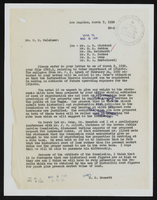Search the Special Collections and Archives Portal
Search Results
Bellehelen (historical)
Authority Link
No description.
Latitude/Longitude
38.06827, -116.46589
Broader
Geographic Location
Vernon (historical)
Authority Link
No description.
Latitude/Longitude
40.42602, -118.78961
Feature
abandoned populated place
Geographic Location
Wahmonie (historical)
Authority Link
No description.
Latitude/Longitude
36.81162, -116.16004
Feature
abandoned populated place
Geographic Location
Candelaria (historical)
Authority Link
No description.
Broader
Feature
abandoned populated place
Geographic Location
Sweetwater (historical)
Authority Link
No description.
Latitude/Longitude
38.46242, -119.17487
Feature
abandoned populated place
Geographic Location
Ashmeadow (historical)
Authority Link
No description.
Latitude/Longitude
36.36162, -116.29421
Feature
abandoned populated place
Geographic Location
Aurora (historical)
Authority Link
No description.
Latitude/Longitude
38.28714, -118.9007
Feature
abandoned populated place
Geographic Location
Columbia (historical)
Authority Link
No description.
Latitude/Longitude
37.72438, -117.23119
Feature
abandoned populated place
Geographic Location
Cottonwood (historical)
Authority Link
No description.
Latitude/Longitude
40.63326, -115.86757
Feature
abandoned populated place
Geographic Location
Pagination
Refine my results
Content Type
Creator or Contributor
Subject
Archival Collection
Digital Project
Resource Type
Year
Material Type
Place
Language
Records Classification

